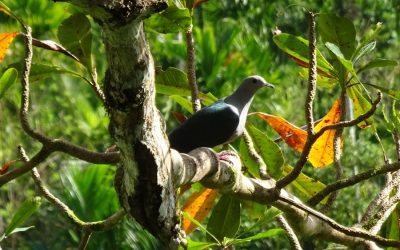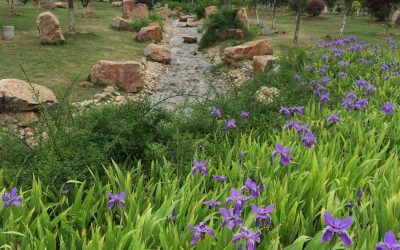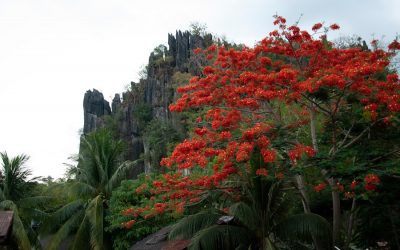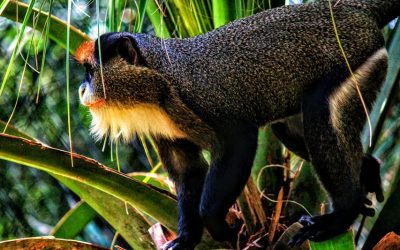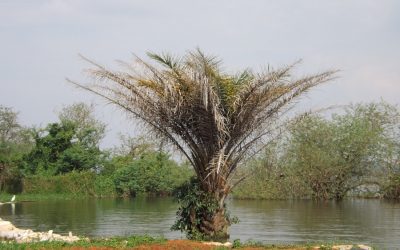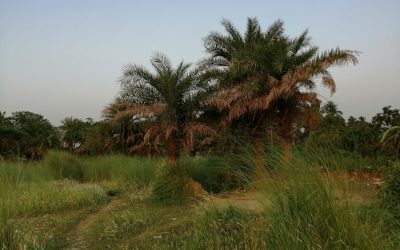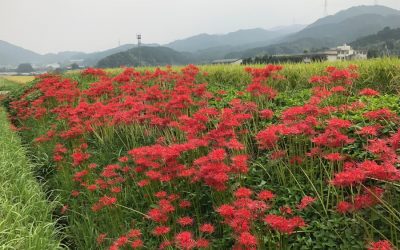Explore the World Through Geography, Natural Resources & Daily History
Clear, reliable and engaging guides that help you understand our planet — from UK geography education to global natural resources and On This Day history events.
Explore, discover, and learn about the wonders of our world! At Earth Site, we’re passionate about bringing geography, history, and science to life for curious minds of all ages. Whether you’re delving into historical events, uncovering the mysteries of the natural world, or seeking interactive resources, you’re in the right place.
Here, you can uncover the stories behind historical events, explore the natural wonders of our planet, and gain valuable insights into how the Earth’s systems shape our daily lives. From the towering peaks of mountain ranges to the far-reaching impacts of human innovation, we aim to make every topic both engaging and informative.
Start your journey of discovery with us today, and let’s make learning an adventure!
What We Cover
Earth Site brings together engaging and accessible educational content designed to help you understand the world, its history, and its natural systems.
🌍 Geography Education (UK & Worldwide)
We publish clear, easy-to-understand geography resources for students, teachers and curious learners. Our guides support geography education in the UK and cover physical geography, climate, ecosystems, population, and global development.
⛏️ Natural Resources & Environmental Geography
Explore detailed country profiles covering natural resources, mining, energy, geology and global environmental challenges. We show how nations manage minerals, water, land and ecosystems, and why these resources matter.
📅 On This Day in History
Every day has a story. Our On This Day history series features major events, anniversaries, traditions, and cultural milestones from around the world — with timelines, context, and fun facts.
TIMELINE
Discovering the Biodiversity of Panama: The Flora and Fauna
Panama, a narrow isthmus connecting North and South America, is a treasure trove of biodiversity. This small Central American nation boasts an extraordinary variety of ecosystems, ranging from lush rainforests to coastal mangroves, and from mountainous regions to vibrant coral reefs. The geographical position of Panama, coupled with its unique climatic conditions, has fostered an environment where countless species thrive. The country is home to over 10,000 plant species, 1,500 species of vertebrates, and an astonishing array of invertebrates, making it one of the most biodiverse regions on the planet. The significance of Panama’s biodiversity extends beyond its borders; it plays a crucial role in global ecological health. The rich ecosystems contribute to carbon sequestration, water purification, and soil fertility, while also providing habitat for countless species. Furthermore, Panama serves as a critical migratory corridor for numerous birds and other wildlife. The intricate web of life found within its borders is not only vital for the local environment but also for the overall health of the planet. Understanding and preserving this biodiversity is essential for maintaining ecological balance and ensuring the survival of many species. Summary Panama is home to a rich and diverse array of flora and fauna, making it a hotspot for biodiversity. The flora of Panama includes over 10,000 species of plants, with a high level of endemism. The diverse fauna of Panama includes over 200 species of mammals, 900 species of birds, and numerous reptiles and amphibians. Panama is home to many endemic species, meaning they are found nowhere else in the world. Threats to biodiversity in Panama include deforestation, habitat destruction, and climate change,...
Exploring the Flora and Fauna of South Korea
South Korea, a nation characterised by its rapid industrialisation and urban development, is also home to a remarkable array of biodiversity. Nestled on the Korean Peninsula, the country boasts a variety of ecosystems ranging from temperate forests and wetlands to coastal regions and mountainous terrains. This diverse landscape supports a wealth of flora and fauna, some of which are endemic to the region. The interplay between South Korea’s geographical features and its climatic conditions has fostered an environment where unique species can thrive, making it a significant area for biological research and conservation. The importance of biodiversity in South Korea extends beyond mere aesthetics; it plays a crucial role in maintaining ecological balance and supporting human livelihoods. The rich variety of species contributes to ecosystem services such as pollination, water purification, and soil fertility. However, the pressures of urbanisation, pollution, and climate change pose significant threats to this delicate balance. Understanding and preserving South Korea’s biodiversity is not only vital for the environment but also for the cultural heritage and economic sustainability of the nation. Summary South Korea is home to a diverse range of plant and animal species, making it a hotspot for biodiversity in East Asia. Unique plant species in South Korea include the Korean fir, Korean pine, and the rare Korean ginseng, which are all important to the country’s ecosystem. Native animal species in South Korea include the endangered Amur leopard, Asiatic black bear, and the Korean water deer, all of which are protected under conservation efforts. Conservation efforts in South Korea focus on protecting endangered species, restoring habitats, and promoting sustainable practices to preserve the...
Exploring Fiji’s Rich Flora and Fauna
Fiji, an archipelago nestled in the South Pacific Ocean, is renowned for its stunning landscapes, vibrant cultures, and rich biodiversity. Comprising over 300 islands, the nation boasts a unique blend of ecosystems that range from lush rainforests to coral reefs teeming with marine life. The geographical isolation of these islands has led to the evolution of a plethora of endemic species, making Fiji a hotspot for biodiversity. This remarkable variety is not only a testament to the resilience of nature but also a crucial component of the global ecological balance. The intricate web of life found in Fiji plays a vital role in sustaining the environment, supporting local communities, and attracting visitors from around the world. The significance of Fiji’s biodiversity extends beyond its aesthetic appeal; it is integral to the livelihoods of its inhabitants. The natural resources provided by the islands support agriculture, fisheries, and tourism, which are essential for the economy. However, this delicate balance is increasingly threatened by human activities and climate change. Understanding and appreciating Fiji’s biodiversity is paramount for fostering conservation efforts and ensuring that future generations can enjoy the natural wonders that the islands have to offer. This article delves into the unique flora and fauna of Fiji, the conservation initiatives in place, and the traditional knowledge that underpins the relationship between the Fijian people and their environment. Summary Fiji is home to a rich and diverse range of plant and animal species, making it a hotspot for biodiversity. The flora of Fiji is unique and diverse, with a wide variety of plant life including many endemic species found nowhere else in the...
Exploring the Rich Flora and Fauna of Congo (Kinshasa)
Congo (Kinshasa), officially known as the Democratic Republic of the Congo (DRC), is a vast and resource-rich nation located in Central Africa. It is the second-largest country on the continent, covering an area of approximately 2.34 million square kilometres. The DRC is bordered by nine countries, including Uganda, Rwanda, and Angola, and boasts a population of over 90 million people, making it one of the most populous nations in Africa. The capital city, Kinshasa, is situated on the banks of the Congo River, which serves as a vital artery for trade and transportation within the region. The DRC’s rich cultural tapestry is woven from over 200 ethnic groups, each contributing to a vibrant mosaic of languages, traditions, and customs. The DRC is not only significant for its human diversity but also for its extraordinary natural wealth. The country is home to the Congo Basin, the second-largest rainforest in the world, which plays a crucial role in global climate regulation and biodiversity preservation. This immense forested area is a sanctuary for countless species of plants and animals, many of which are endemic to the region. The DRC’s natural resources extend beyond its forests; it is also rich in minerals such as cobalt, copper, and diamonds, which have attracted international interest and investment. However, this wealth has often been accompanied by conflict and exploitation, raising questions about sustainable development and conservation in a country that is both a treasure trove of biodiversity and a battleground for human rights. Summary Congo (Kinshasa) is a country in Central Africa known for its rich biodiversity and stunning natural landscapes. The diverse ecosystems of Congo...
Exploring the Biodiversity of Congo (Brazzaville)
Congo (Brazzaville), officially known as the Republic of the Congo, is a nation located in Central Africa, bordered by Gabon to the west, Cameroon to the northwest, the Central African Republic to the north, the Democratic Republic of the Congo to the east and south, and the Atlantic Ocean to the southwest. The capital city, Brazzaville, sits on the banks of the Congo River, directly across from Kinshasa, the capital of the Democratic Republic of the Congo. This geographical positioning not only makes it a significant political hub but also a cultural melting pot, where various ethnic groups and traditions converge. The Republic of the Congo is often overshadowed by its larger neighbour, yet it boasts a wealth of natural resources and biodiversity that are crucial to its identity and economy. The country is characterised by its vast rainforests, savannahs, and river systems, which are home to an array of flora and fauna. The Congo Basin, one of the largest tropical rainforest areas in the world, plays a pivotal role in global ecology and climate regulation. The rich biodiversity found within these ecosystems is not only vital for environmental health but also for the livelihoods of local communities. As we delve deeper into the natural wonders of Congo (Brazzaville), it becomes evident that this nation is a treasure trove of ecological significance, deserving of both appreciation and protection. Summary Congo (Brazzaville) is a country in Central Africa known for its rich biodiversity and natural beauty. The flora of Congo (Brazzaville) is incredibly diverse, with a wide variety of plant species found in its forests and savannas. Congo (Brazzaville) is...
Exploring the Flora and Fauna of Pakistan
Pakistan, a country endowed with a rich tapestry of biodiversity, is home to an array of ecosystems that support a multitude of species. Spanning from the towering peaks of the Himalayas in the north to the arid deserts of Sindh in the south, the geographical diversity of Pakistan plays a crucial role in fostering its unique flora and fauna. The nation’s varied climate, ranging from temperate to tropical, coupled with its diverse topography, creates a multitude of habitats that are essential for sustaining life. This intricate web of ecosystems not only supports wildlife but also provides vital resources for local communities, making the preservation of biodiversity a matter of both ecological and socio-economic significance. The significance of Pakistan’s biodiversity extends beyond its borders; it is part of the global ecological heritage. The country is situated at the crossroads of several biogeographical regions, which contributes to its rich species diversity. With over 6,000 species of flowering plants, 668 species of birds, and 177 species of mammals, Pakistan’s biodiversity is a treasure trove for researchers and conservationists alike. However, this wealth of natural resources faces numerous challenges that threaten its sustainability. Understanding the intricate relationships within these ecosystems and the pressures they face is essential for effective conservation strategies and for ensuring that future generations can enjoy the natural beauty and ecological benefits that Pakistan has to offer. Summary Pakistan is home to a rich and diverse range of flora and fauna, making it a hotspot for biodiversity. The flora of Pakistan includes a wide variety of plant species, from the iconic juniper trees to the colourful orchids found in the...
Exploring the Flora and Fauna of North Korea
North Korea, officially known as the Democratic People’s Republic of Korea (DPRK), is a nation often shrouded in mystery and political intrigue. However, beneath its complex socio-political landscape lies a rich tapestry of biodiversity that is both unique and significant. The country’s varied topography, which includes mountains, forests, rivers, and coastlines, creates a multitude of habitats that support a wide array of plant and animal life. This biodiversity is not only crucial for the ecological balance of the region but also holds cultural and economic importance for the North Korean people. The geographical features of North Korea contribute to its ecological diversity. The country is home to the rugged terrain of the Taebaek Mountains, which stretch along the eastern part of the peninsula, and the low-lying plains of the west. These contrasting landscapes foster distinct ecosystems, ranging from temperate forests to wetlands and coastal areas. The climate varies from humid continental in the north to a more temperate climate in the south, further enhancing the variety of species that can thrive in this environment. Understanding North Korea’s biodiversity is essential for appreciating its natural heritage and the challenges it faces in conservation. Summary North Korea is home to a diverse range of flora and fauna, making it a unique destination for nature enthusiasts. The country’s unique flora includes rare species such as the Kimjongilia and the Magnolia sieboldii, which can only be found in North Korea. North Korea’s diverse fauna includes species such as the Amur leopard, Asiatic black bear, and red-crowned crane, making it a haven for wildlife enthusiasts. Conservation efforts in North Korea are focused on protecting...
Exploring the Flora and Fauna of Finland
Finland, often referred to as the “Land of a Thousand Lakes,” is a country that boasts an extraordinary array of biodiversity, shaped by its unique geographical features and climatic conditions. Spanning over 338,000 square kilometres, Finland is home to a variety of ecosystems, ranging from boreal forests and wetlands to alpine tundra and coastal archipelagos. This rich tapestry of habitats supports a multitude of species, making Finland a vital area for conservation and ecological study. The interplay between its natural landscapes and the changing seasons creates a dynamic environment where flora and fauna adapt in fascinating ways. The significance of Finland’s biodiversity extends beyond its borders; it plays a crucial role in global ecological health. The country is part of the boreal forest biome, which is one of the largest terrestrial biomes on Earth. These forests act as significant carbon sinks, helping to mitigate climate change. Furthermore, Finland’s commitment to preserving its natural heritage is evident in its extensive network of protected areas, which cover approximately 10% of the country’s land area. This dedication to conservation not only safeguards native species but also promotes sustainable practices that benefit both the environment and local communities. Summary Finland is home to a rich and diverse biodiversity, with a wide range of flora and fauna. The diverse flora of Finland includes over 1,000 native plant species, including many rare and unique varieties. Finland’s rich fauna includes a variety of mammals, birds, and marine life, with the iconic brown bear and grey wolf among its inhabitants. Exploring Finland’s national parks and nature reserves offers visitors the chance to experience the country’s natural beauty...
Exploring the Rich Flora and Fauna of Cameroon
Cameroon, often referred to as “Africa in miniature,” is a country that boasts an extraordinary array of biodiversity, encompassing a wide range of ecosystems, flora, and fauna. This rich biological tapestry is a result of its varied climatic zones, ranging from coastal regions to mountainous terrains, and from savannahs to dense rainforests. The nation is home to over 20,000 plant species, 400 mammal species, and 900 bird species, making it a vital area for conservation and ecological study. The significance of Cameroon’s biodiversity extends beyond its borders; it plays a crucial role in global ecological health and offers invaluable resources for scientific research, medicine, and sustainable development. The intricate web of life found in Cameroon is not merely a collection of species but a complex interplay of ecosystems that support one another. The country’s unique geographical features, including the Adamawa Plateau, the coastal plains of the Atlantic Ocean, and the volcanic peaks of Mount Cameroon, create distinct habitats that nurture diverse life forms. This diversity is not only a source of national pride but also a critical component of the planet’s biological heritage. Understanding and preserving this biodiversity is essential for maintaining ecological balance and ensuring the survival of countless species, some of which are endemic to the region. Summary Cameroon is home to a rich and diverse range of ecosystems, flora, and fauna, making it a biodiversity hotspot in Africa. The diverse ecosystems of Cameroon include rainforests, savannas, mountains, and coastal areas, each supporting a unique array of plant and animal species. The unique flora of Cameroon includes a variety of rare and endemic plant species, such as...
Exploring the Flora and Fauna of Côte d’Ivoire
Côte d’Ivoire, also known as Ivory Coast, is a West African nation renowned for its rich and diverse biodiversity. This country, which spans approximately 322,463 square kilometres, is situated along the Gulf of Guinea and is characterised by a variety of ecosystems, including coastal mangroves, savannahs, and dense tropical rainforests. The geographical diversity, combined with a tropical climate, creates an ideal environment for a wide array of plant and animal species. Côte d’Ivoire is home to over 20,000 species of plants, 1,200 species of vertebrates, and countless invertebrates, making it one of the most biodiverse countries in Africa. The significance of Côte d’Ivoire’s biodiversity extends beyond its ecological value; it plays a crucial role in the livelihoods of local communities. Many Ivoirians depend on natural resources for their sustenance, including food, medicine, and materials for shelter. The intricate relationships between the flora and fauna contribute to the overall health of the ecosystems, which in turn support agricultural practices and traditional lifestyles. However, this rich tapestry of life faces numerous challenges that threaten its existence, necessitating urgent attention and action to preserve it for future generations. Summary Côte d’Ivoire is home to a rich and diverse range of flora and fauna, making it a biodiversity hotspot in West Africa. The flora of Côte d’Ivoire includes over 7,300 species of plants, many of which are endemic to the region and have significant cultural and economic value. The unique fauna of Côte d’Ivoire includes iconic species such as elephants, chimpanzees, and the critically endangered western chimpanzee. Conservation efforts in Côte d’Ivoire are focused on protecting and preserving the country’s natural heritage, including...
Exploring the Biodiversity of Togo: The Flora and Fauna
Togo, a small West African nation bordered by Ghana, Benin, and Burkina Faso, is often overlooked in discussions about biodiversity. However, this country boasts a remarkable array of ecosystems, ranging from coastal lagoons to savannahs and dense forests. Togo’s geographical position, spanning approximately 56,785 square kilometres, allows for a unique convergence of flora and fauna that is both rich and varied. The nation’s biodiversity is not only a testament to its ecological significance but also a vital component of the livelihoods of its inhabitants, who rely on these natural resources for sustenance, medicine, and cultural practices. The biodiversity of Togo is shaped by its climatic conditions, which vary from the humid tropical climate in the south to the drier savannah climate in the north. This climatic diversity fosters a wide range of habitats that support numerous species. The country is home to several protected areas, including national parks and reserves, which play a crucial role in conserving its unique ecosystems. Understanding Togo’s biodiversity is essential not only for ecological preservation but also for promoting sustainable development and enhancing the well-being of local communities. Summary Togo is home to a rich and diverse range of flora and fauna, making it a hotspot for biodiversity in West Africa. The flora of Togo includes over 2,500 species of plants, with a significant portion being endemic to the region. Togo’s diverse fauna includes over 150 species of mammals, 300 species of birds, and a variety of reptiles, amphibians, and insects. Threats to biodiversity in Togo include deforestation, habitat loss, poaching, and climate change, which are putting many species at risk of extinction. Conservation...
Discovering the Rich Flora and Fauna of Oman
Oman, a nation located on the southeastern coast of the Arabian Peninsula, is often celebrated for its rich cultural heritage and stunning landscapes. However, it is equally important to recognise the remarkable biodiversity that thrives within its borders. The country boasts a unique blend of ecosystems, ranging from arid deserts to lush coastal areas, which support a wide variety of flora and fauna. This diversity is not merely a backdrop to Oman’s natural beauty; it plays a crucial role in the ecological balance and cultural identity of the region. The intricate web of life found in Oman is a testament to the resilience of nature in adapting to the harsh climatic conditions typical of the Arabian Peninsula. The geographical features of Oman significantly contribute to its biodiversity. The Hajar Mountains, which run through the northern part of the country, create microclimates that support various plant and animal species. Meanwhile, the coastal regions along the Arabian Sea and the Gulf of Oman provide habitats for marine life, including coral reefs and migratory birds. The interplay between these diverse environments fosters a rich tapestry of life that is both unique and vulnerable. Understanding Oman’s biodiversity is essential not only for conservation efforts but also for appreciating the intricate connections between its ecosystems and the cultural practices of its people. Summary Oman is home to a rich and diverse range of ecosystems, making it a hotspot for biodiversity. From the lush greenery of the Dhofar region to the arid deserts of the interior, Oman’s diverse landscapes support a wide variety of plant and animal species. The unique flora of Oman includes the...
